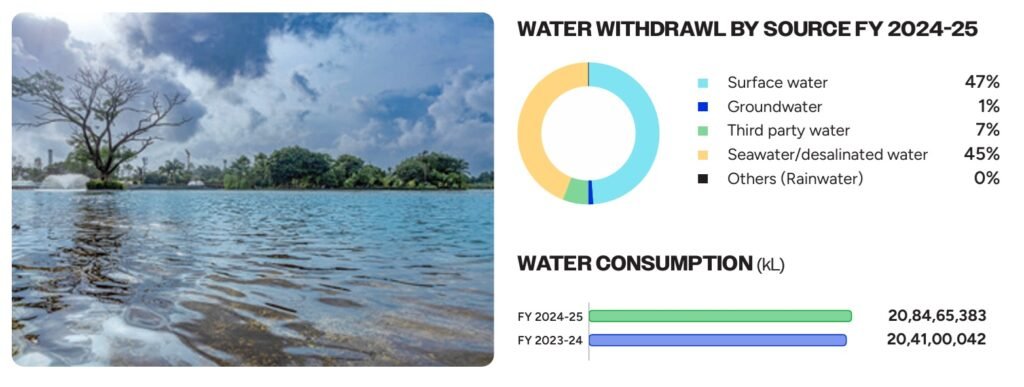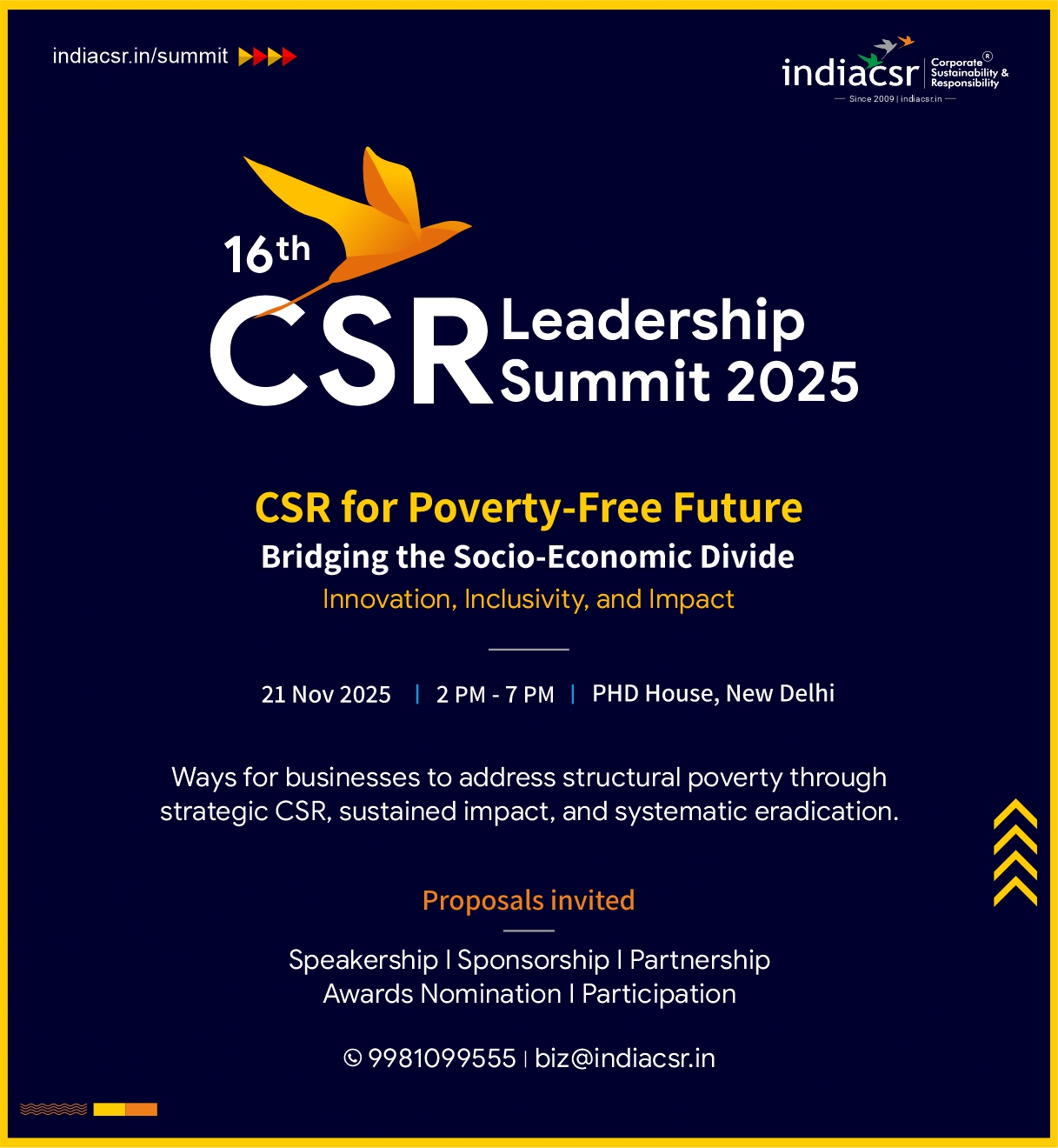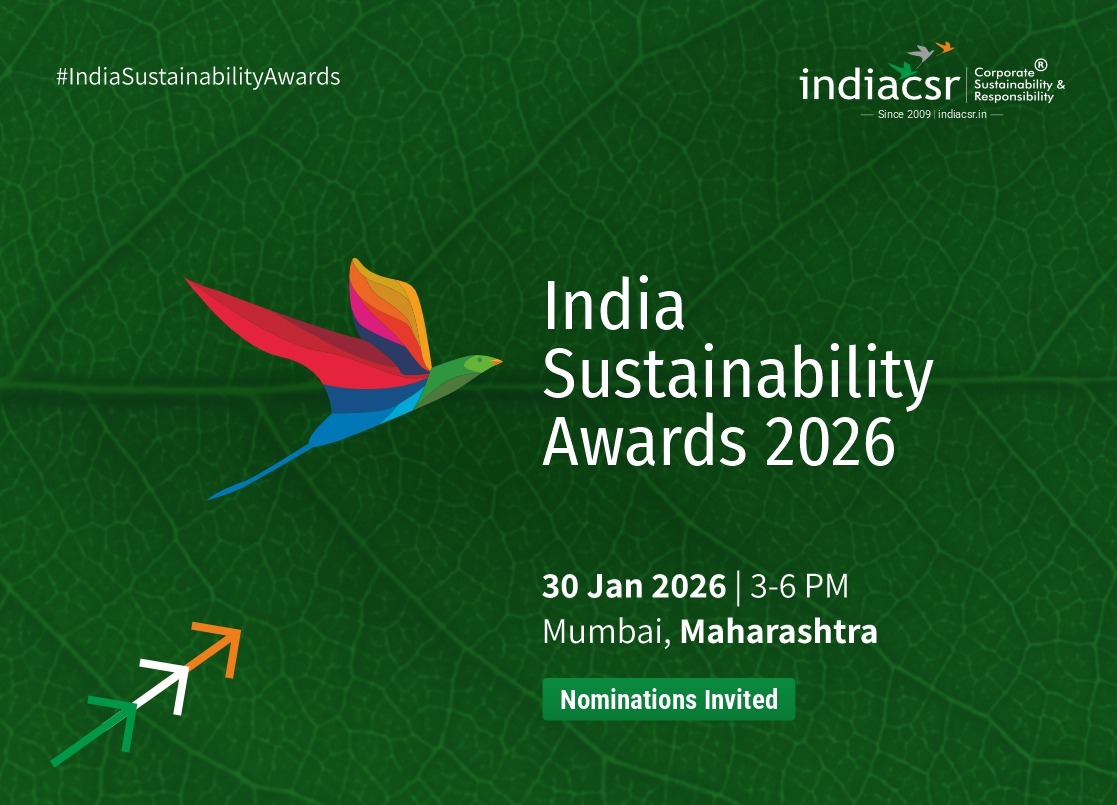Reliance Industries reinforces its sustainability leadership through reduced dependence on freshwater sources and enhanced desalination capacity
MUMBAI (India CSR): Reliance Industries Limited (RIL), India’s largest private sector enterprise, has significantly strengthened its water sustainability performance by reducing its reliance on groundwater sources in FY 2024-25. The company’s latest Business Responsibility and Sustainability Report (BRSR) highlights that groundwater withdrawal dropped from 24.26 lakh kilolitres in FY 2023-24 to 23.19 lakh kilolitres in FY 2024-25, marking a reduction of over 4.4% year-on-year.
India’s largest company, in its Sustainability Report for FY 2024-25, has reaffirmed its commitment to sustainable water management by maintaining a minimal reliance on groundwater—just 1% of total water withdrawal. Guided by its sustainability vision and alignment with the national agenda of Viksit Bharat, RIL continues to advance toward resource efficiency and environmental stewardship.
The company’s Business Responsibility and Sustainability Report (BRSR) underscores its adherence to Principle 6 — “Respect and make efforts to protect and restore the environment.” Water and Effluent Management remains a key pillar of RIL’s sustainability framework, driving its mission to achieve operational excellence while safeguarding natural ecosystems.

Strategic Reduction in Groundwater Dependence
Groundwater is one of the most critical yet vulnerable natural resources. Recognising this, RIL has adopted a multi-pronged approach to reduce its dependence on fresh groundwater extraction across its manufacturing and refining facilities.
In FY 2024-25, the company’s total water withdrawal stood at 20.84 crore kilolitres, with groundwater contributing only about 0.11% of the total, compared to 0.12% in the previous year. The company achieved this through expanded rainwater harvesting systems, increased use of desalinated seawater, and closed-loop recycling technologies that minimise the need for fresh groundwater, the report revealed.
| Parameter | FY 2024-25 | FY 2023-24 |
|---|---|---|
| Groundwater Withdrawal (in kilolitres) | 23,19,387 | 24,26,470 |
| Total Water Withdrawal (in kilolitres) | 20,84,65,383 | 20,41,00,042 |
| Groundwater Share in Total (%) | 0.11% | 0.12% |
Groundwater Use: A Focus on Responsible Extraction
In FY 2024-25, RIL reported total water withdrawal of 20,84,65,383 kilolitres (kL) across its Oil to Chemical (O2C) and Oil & Gas (E&P) operations in India. Of this, groundwater use stood at 23,19,387 kL, representing only 1% of total water withdrawal, compared to 24,26,470 kL (1.2%) in FY 2023-24.
This marginal reduction reflects the company’s conscious strategy to minimise dependence on groundwater—a vital but finite resource—through investments in seawater desalination, rainwater harvesting, and advanced recycling technologies.
| Water Source | Volume (kL) | % of Total Withdrawal |
|---|---|---|
| Surface water | 9,72,17,804 | 47% |
| Seawater/desalinated water | 9,45,13,209 | 45% |
| Third-party water | 1,41,31,821 | 7% |
| Groundwater | 23,19,387 | 1% |
| Others (Rainwater) | 2,83,162 | 0% |
| Total | 20,84,65,383 | 100% |
By maintaining groundwater use at only 1%, RIL demonstrates a sustainability-first approach that balances industrial growth with responsible natural resource management.
Sustainability Strategy for Water Management
RIL’s strategy for sustainable water management is designed around four key pillars:
- Reducing Freshwater Reliance:
A core sustainability goal for RIL is to minimise freshwater dependency. With 45% of total water sourced from seawater/desalinated water, the company has effectively shifted toward alternative, non-freshwater sources. - Maximising Recyclability:
RIL deploys advanced treatment technologies and process innovations to ensure high levels of water recycling and reuse, significantly reducing freshwater intake. - Risk Mitigation and Efficiency:
The company identifies water scarcity as a tangible operational risk. Investments in desalination, digital monitoring, and recycling infrastructure enhance water efficiency and reduce cost exposure over the long term. - Zero Liquid Discharge (ZLD):
RIL’s Silvassa Manufacturing Division operates as a Zero Liquid Discharge (ZLD) site, ensuring no untreated water is released into the environment.
Water Intensity and Performance Metrics
| Metric | FY 2024-25 | FY 2023-24 |
|---|---|---|
| Total Water Withdrawal (kL) | 20,84,65,383 | 20,41,00,042 |
| Water intensity per rupee of turnover (kL / INR) | 0.0000374 | 0.0000355 |
| Water intensity per rupee of turnover (PPP-adjusted) (kL / INR adjusted for PPP) | 0.0007730 | 0.0007952 |
| Water intensity per physical output (kL / MT) | 2.590 | 2.610 |
While total water withdrawal marginally increased due to operational expansion, the water intensity adjusted for PPP improved from 0.0007952 to 0.0007730, underscoring RIL’s efficiency gains and technological advancements in water use optimisation.
Assurance and Transparency
The water-related sustainability information disclosed by RIL for FY 2024-25 has been subjected to Reasonable Assurance by Deloitte Haskins & Sells LLP, reinforcing the credibility and transparency of RIL’s environmental disclosures.
Towards a Water-Secure Future
RIL’s continued reduction in groundwater dependency demonstrates its leadership in corporate water stewardship and alignment with UN Sustainable Development Goals (SDG 6: Clean Water and Sanitation) and SDG 12: Responsible Consumption and Production.
By focusing on innovation, accountability, and sustainability, RIL showcases how Indian industry can balance economic growth with ecological preservation—creating shared value for both people and the planet.
(India CSR)








